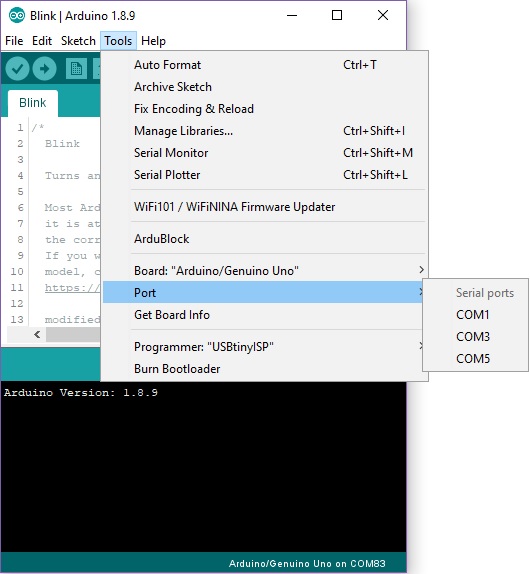So I removed the FTDI drivers from my Mac so it will use Apple's drivers. Now even after doing all this when I connect my Arduino Uno to my Mac via the USB it does not get detected. I removed the kext and pkg files for the FTDI drivers and deleted them completely, still when I open the System Report I still see the FTDI USB Serial Driver entry. Most new users find it difficult to get the USB drivers. Because Arduino Uno Clone does not use the same driver chip with Arduino Uno R3 Original. But don't worry, Srishti Robotics have provided two drivers. Use the USB / Serial CH340 / CH341 Driver‘s Download: Windows 32 bit: Download. Windows 64 bit: Download. My MacOS and Arduino IDE still work with Arduino Uno R3 When I checked the driver of Mac OS to work with Arduino Nano, I saw a link, you can download it from this. After download it, install it. . Finally, select the driver file named 'FTDI USB Drivers', located in the 'Drivers' folder of the Arduino Software download. Note: the FTDI USB Drivers are from Arduino. But when you install drivers for other Controllers, such as Xadow Main Board, Seeeduino Clio, Seeeduino Lite, you need to download corresponding driver file and save it. When the Arduino Software (IDE. MAC OS9: Windows Server 2008 R2 x64: MAC OS8: Support for WinCE FTDI drivers are available for Windows CE 4.2-5.2, 6.0/7.0 and 2013. Support for older versions of Windows Desktop.
Hi All,
There seems to be a new compatibility issue with Mac OSX 10.7 and the USBASP. I had been using a USBASP successfully for several months. Programming with UNO, ATTiny, and ATMega's. When a Mac OSX update came out. After the update I could not find my USBASP in the Serial Port listed on the Arduino IDE. I went to terminal and searched the /dev/ with the command ls /dev/cu.* with no luck. When I went to the System info there it was showing up just fine.
USBasp:
Product ID: 0x05dcVendor ID: 0x16c0Version: 1.02Speed: Up to 1.5 Mb/secManufacturer: www.fischl.deLocation ID: 0x1a200000 / 3Current Available (mA): 500Current Required (mA): Unknown (Device has not been configured)
I went on to try the USBASP on two other updated Mac's with the same results. I even went and bought a new USBASP maybe the one Im using got damaged, their cheap. Nope didnt work. Lastly I googled it and all I found were people with the same problem and no answers.
Jeff
A prerequisite to program ESP*-based modules usually is to establish a communications channel from your development platform (PC, Mac, Linux) to the device over USB. This in turn requires your system to detect the USB-to-Serial (aka USB-to-TTL, aka USB-to-UART) adapter on the ESP8266 or ESP32 module. There are two commonly used adapters in the wild these days:
- Silicon Labs CP210x
- Winchiphead CH340x / CH341x

Popular modules that use the CP210x are:
- NodeMCU v1.0 (i.e. V2) module
- WeMos D1 mini Pro (some revisions)
Examples of modules that use the CH340G chip are:


- WeMos D1 mini
- D1 mini Lite
Note that there is no harm done if you install both drivers even if you currently just use one! If you are not sure which adapter your ESP8266/ESP32 module uses then just install both.
Silicon Labs CP210x§

Silicon Labs maintains a page in English that lists downloadable driver binaries that also contains installation instructions.
Winchiphead CH340x / CH341x§
Winchiphead (WCH) maintains its website only in Chinese. However, the download page for the drivers is so simple that even non-Chinese speakers will find the right download link.
Warning

Macos Arduino Usb Driver
Some systems require a reboot before the driver installation can be successfully completed. The installer may or may not tell you about this! If you later connect the ThingPulse device and the system does not recognize it try rebooting as a first measure..